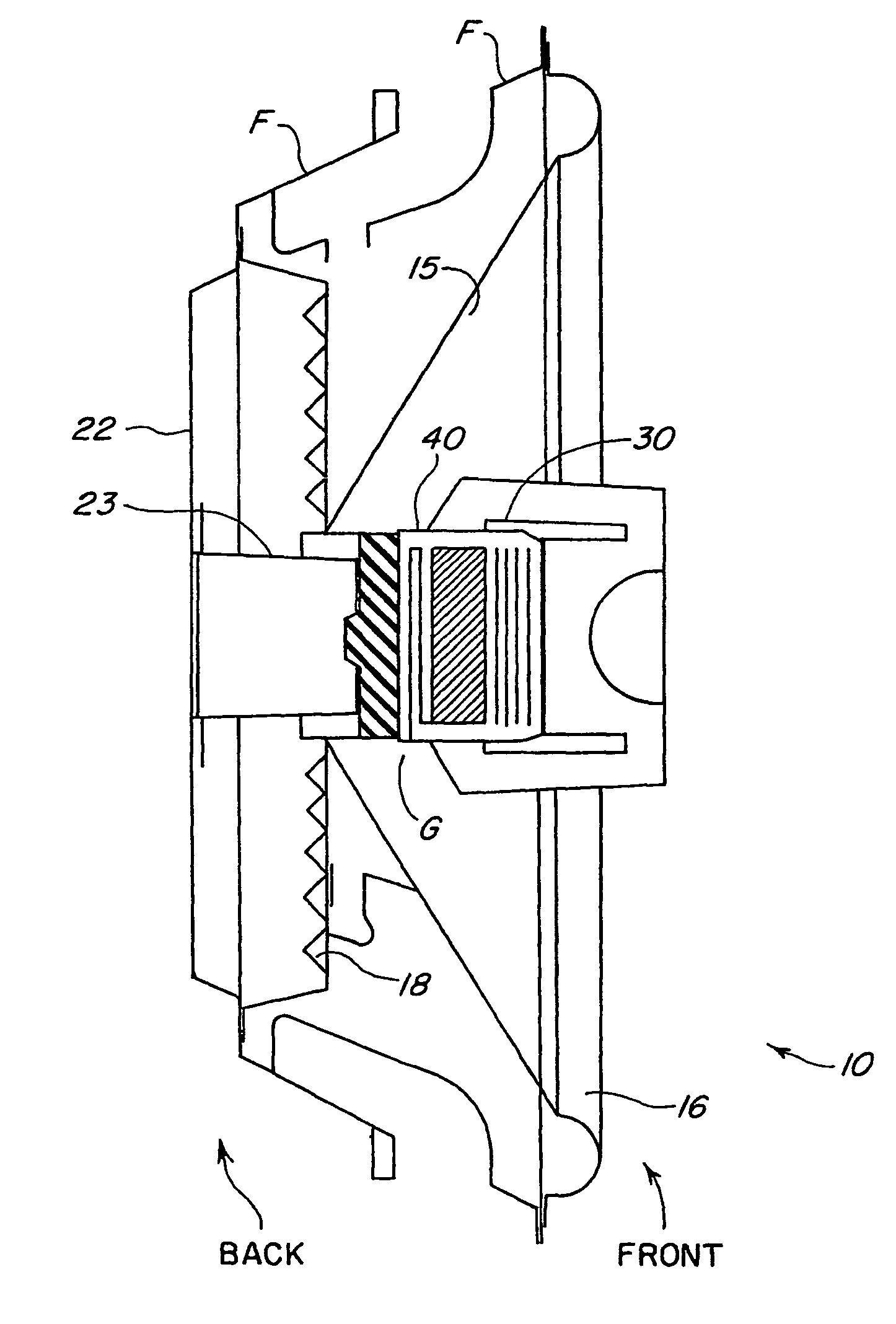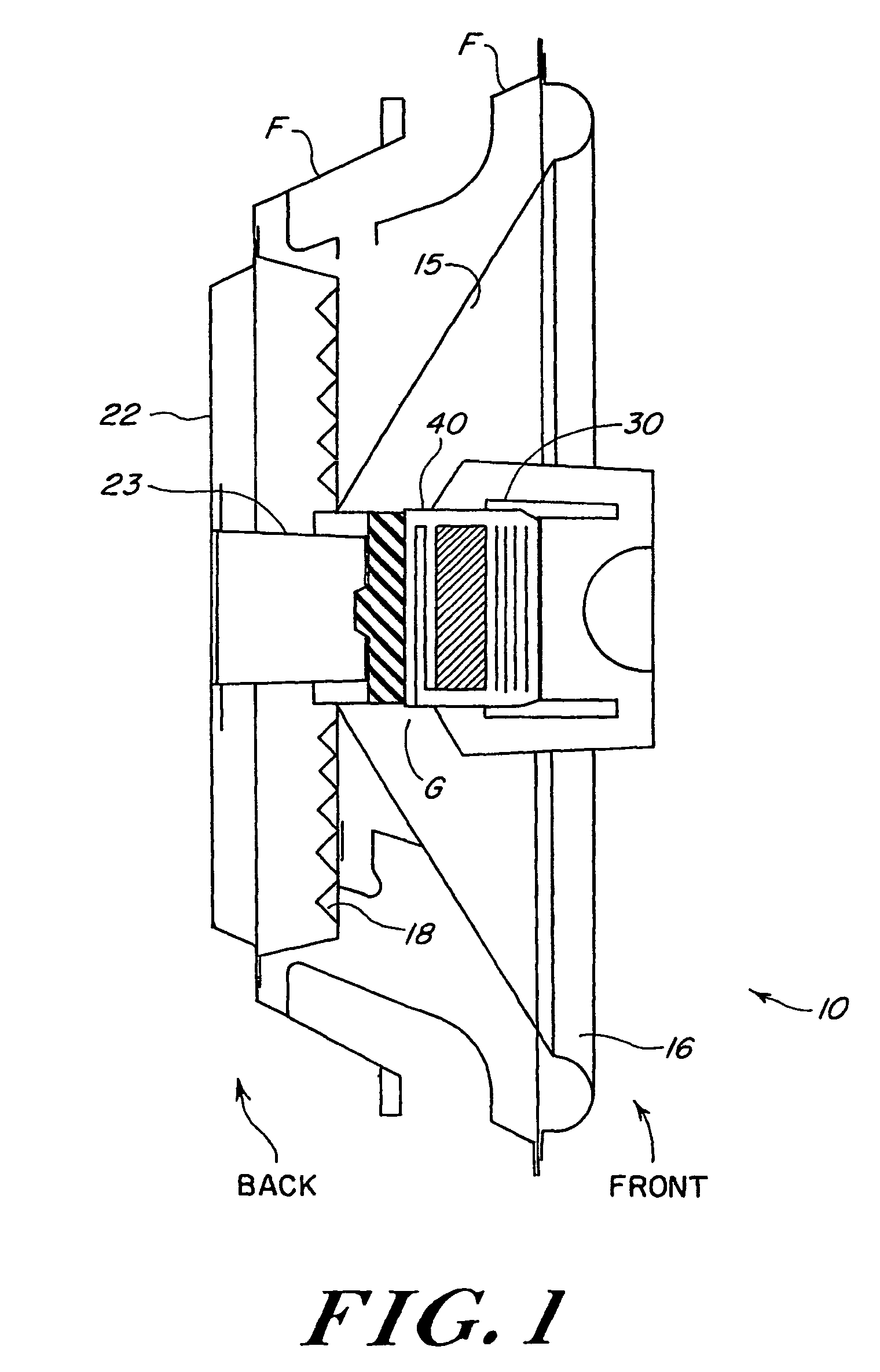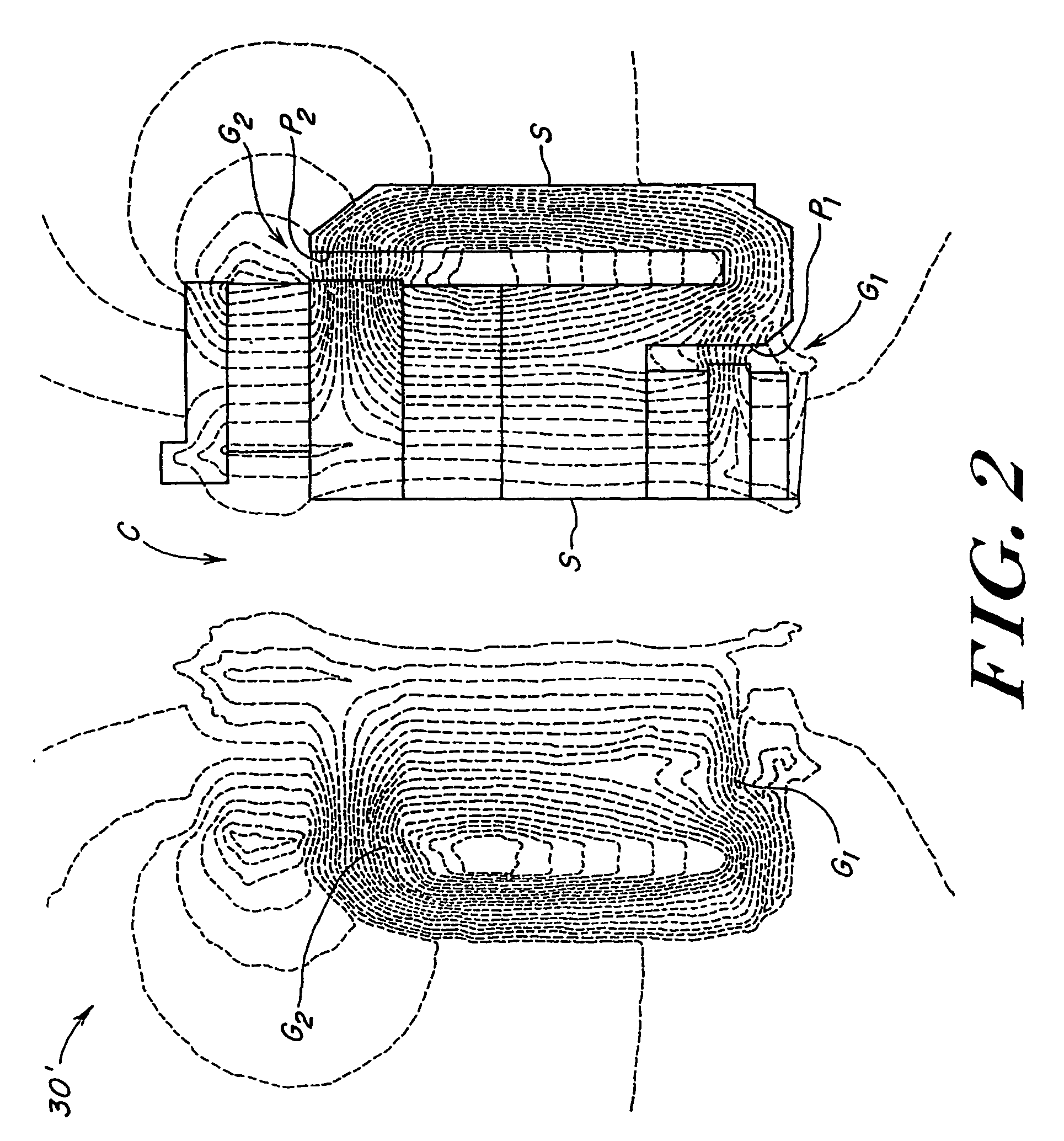Low profile speaker and system
a speaker and low-profile technology, applied in the field of compact speakers and speaker/enclosure systems, can solve the problems of increasing the cost of small speakers, increasing the cost of enclosures, and increasing the cost of speakers, so as to enhance the response, reduce the depth, and enhance the spatial fidelity of sound reproduction
- Summary
- Abstract
- Description
- Claims
- Application Information
AI Technical Summary
Benefits of technology
Problems solved by technology
Method used
Image
Examples
Embodiment Construction
[0018]The invention may be understood in the context of the constraints imposed in designing small, efficient, high-performance speakers and systems. Reference is hereby made to Applicant's earlier patents and patent applications as follows: U.S. Pat. No. 5,802,191, U.S. application Ser. No. 09 / 100,411, U.S. application Ser. No. 09 / 439,416 and corresponding international application PCT / US99 / 27011, U.S. application Ser. No. 09 / 639,416 and corresponding international application PCT / US00 / 22119. Each of the foregoing patents and applications is incorporated by reference herein in its entirety.
[0019]FIG. 1 illustrates a diametral section through one embodiment of a speaker 10 in accordance with the present invention, showing its structure in detail. The speaker includes a diaphragm 15 (which may interchangeably be referred to herein as a “cone”), supported by a frame F. The cone faces forwardly to project sound, and the frame generally in practice extends into or mounts on an enclosure...
PUM
 Login to View More
Login to View More Abstract
Description
Claims
Application Information
 Login to View More
Login to View More - R&D
- Intellectual Property
- Life Sciences
- Materials
- Tech Scout
- Unparalleled Data Quality
- Higher Quality Content
- 60% Fewer Hallucinations
Browse by: Latest US Patents, China's latest patents, Technical Efficacy Thesaurus, Application Domain, Technology Topic, Popular Technical Reports.
© 2025 PatSnap. All rights reserved.Legal|Privacy policy|Modern Slavery Act Transparency Statement|Sitemap|About US| Contact US: help@patsnap.com



